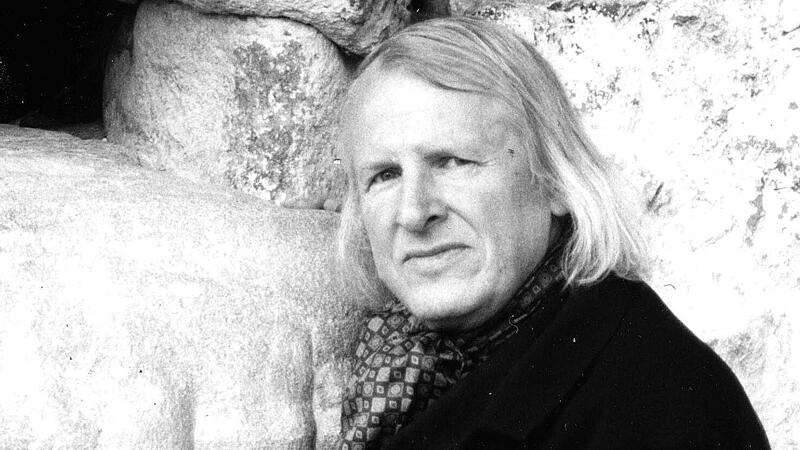Image: (APA)
The winner of the Great Austrian State Prize was also responsible for the Celtic Museum in Hallein and the lecture hall of the Institute of Science and Technology Austria (ISTA) in Klosterneuburg. Shortly before his death, he described the church in Donaucity as one of his most important architectural works of art, according to the organization “Artists Helping Artists.” A soul mass will also take place there on February 7th (2:30 p.m.).
Heinz Tesar was born on June 16, 1939 in Innsbruck. Although he was interested in fine art and worked on “embryo pictures” and “soft monuments,” Tesar studied architecture under Roland Rainer at the Academy of Fine Arts in Vienna from 1961 to 1965. After stays abroad in Hamburg, Munich and Amsterdam, he founded his own architectural office in Vienna in 1973, followed by another in Berlin in 2000. After both offices were closed and his estate was handed over to the Architekturzentrum Wien, he spent his twilight years in the artists’ home in Baden near Vienna.
“Buildings that make sense”
His most important buildings include the Evangelical Church in Klosterneuburg, the renovation of the Hallein City Theater, the “Haus am Zwinger” in Dresden, a bank building in Innsbruck and a commercial building on the Gendarmenmarkt in Berlin. “Tesar’s architecture is an intensive attempt to objectify a consciously subjective point of view, but integrated into the continuity of a Central European architectural development,” Friedrich Achleitner once summarized. Tesar himself once formulated his credo as follows: “Define the appropriate building for the content in its respective environment.” Or in short: “Buildings that make sense.”
In fact, it was difficult to find a recognizable typology and design language for Tesar’s buildings, but a thorough analysis of the construction task was always evident: The Schömer House, which was the administrative center of the Baumax hardware store chain until 2015, was not only the company headquarters, but also with its oval central hall and the surrounding galleries and the cage-like festive staircase, at the same time the representative home of an extraordinary art collection, for which over a decade later he was able to create the Essl Museum on the edge of the Klosterneuburger Au, a museum building that was subordinate to its function and yet still striking. The building continues to serve as a depot for the works of the Essl Collection, which are now owned by the Albertina and the Haselsteiner Private Foundation, and will be the third location of the Albertina to present art to the public again this spring.
For his Catholic church “Christ, Hope of the World” in Vienna’s Donaucity, Tesar further developed the confident use of light openings for spiritual spatial effects, which he had already demonstrated a few years earlier at the Protestant church in Klosterneuburg. The low building, clad with chrome steel plates, stands up elegantly against the dominance of the surrounding high-rise buildings in Donaucity.
Winner of the Great Austrian State Prize
Heinz Tesar has taught at various universities in Europe and America since the 1980s. His work has been honored with numerous exhibitions, including the first solo exhibition by a contemporary Austrian architect in Japan in 2008. From the list of his numerous awards, the Great Austrian State Prize, which was awarded to him in 2011, stands out. At the time, he was honored as “an internationally sought-after architectural artist who not only works in the field of architecture, but also as a painter, draftsman and writer.”
“Heinz Tesar was an overall artist and a humanitarian. Anyone who enters one of his buildings feels, on the one hand, protected, but on the other hand, able to see far beyond the walls,” say Karlheinz and Agnes Essl, who accompanied Tesar from the 1980s until his death quoted in the “Artists Helping Artists” broadcast. “Heinz Tesar has managed to connect people with his architecture. We salute one of the greatest architects Austria has ever produced and his timeless architectural legacy, which will have an impact for a long time to come.”
more from culture
Cultural Capital Salzkammergut: Twelve villages discover art
Michael Bully Herbig is planning a sequel to “Manitu’s Shoe” – that’s the title
Quiz: How well do you know the “Shoe of Manitu”?
A Danish “The Crown”? Series about Queen Margrethe in planning
: Nachrichten
I am an author and journalist who has worked in the entertainment industry for over a decade. I currently work as a news editor at a major news website, and my focus is on covering the latest trends in entertainment. I also write occasional pieces for other outlets, and have authored two books about the entertainment industry.




